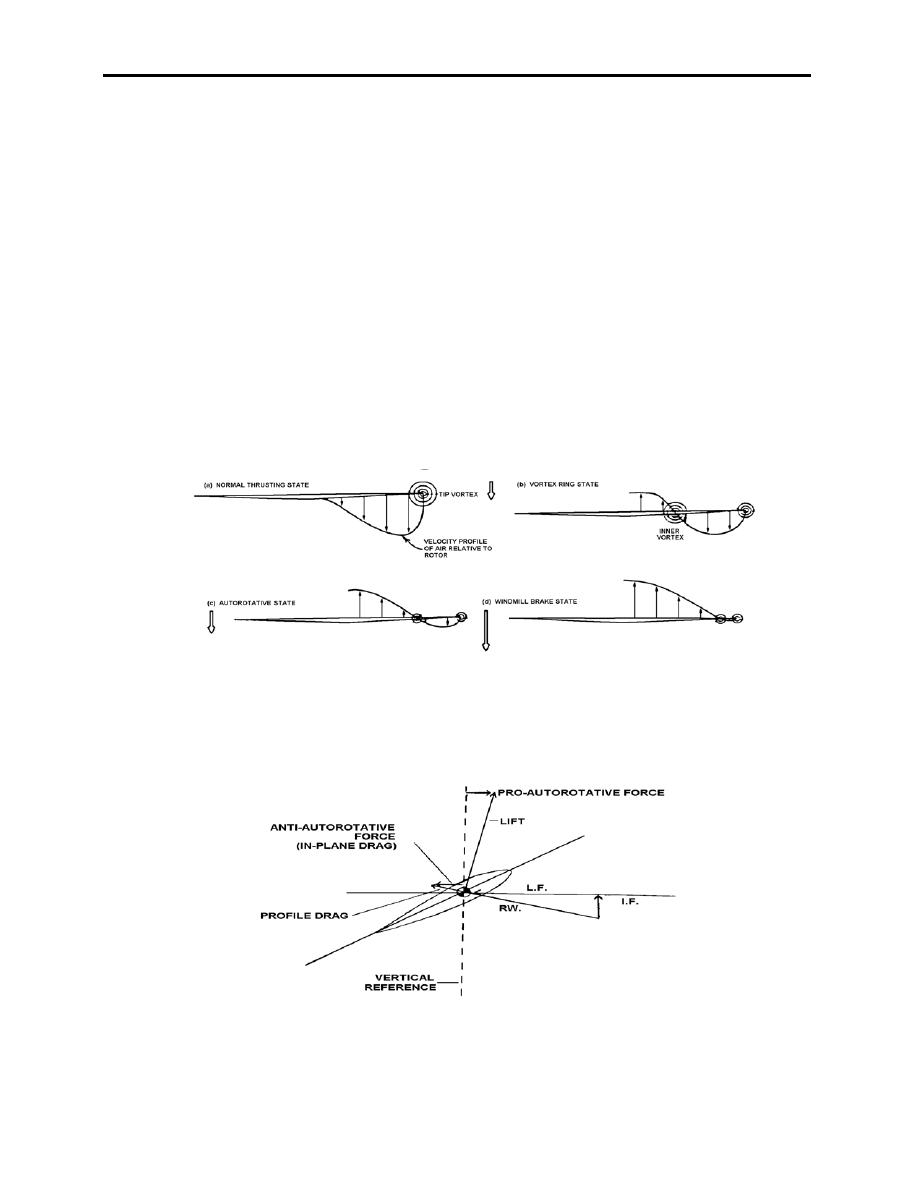 |
|||
|
|
|||
|
|
|||
| ||||||||||
|
|  HELICOPTER AERODYNAMICS WORKBOOK
CHAPTER 4
-- the length of time you will remain airborne in the windmill brake state is simply a function of
terminal velocity.
Comparing the diagrams of conditions at the blade element (figure 4-1), we can observe
collective pitch required to maintain a constant thrust changes, due to the net flow through the
rotor disk. Additionally, in a climb, the flow causes the lift vector to tilt back, thus increasing the
power required. The opposite happens in the windmill brake state and low rates of descent.
During vortex ring state, the conditions are similar to those conditions in a climb, so collective
pitch setting and power required must be high to maintain vortex ring state. Therefore, reducing
collective setting to reduce pitch is a recovery technique for this condition.
AUTOROTATION
Continuing to lower the collective to minimum pitch transitions the helicopter from vortex
ring state to vertical autorotation state. A majority of the flow will be upwards through the rotor
system, but due to the presence of induced downflow, one may still classify it as being in vortex
ring state (figure 4-2).
Figure 4-2
There are differences, though. The lift vector becomes tilted forward (figure 4-3), providing
enough power to drive the tail rotor and gearboxes without the engine. Drag of the blades is also
overcome.
Figure 4-3
Blade Element in Autorotation
AUTOROTATION 4-3
|
|
Privacy Statement - Press Release - Copyright Information. - Contact Us |